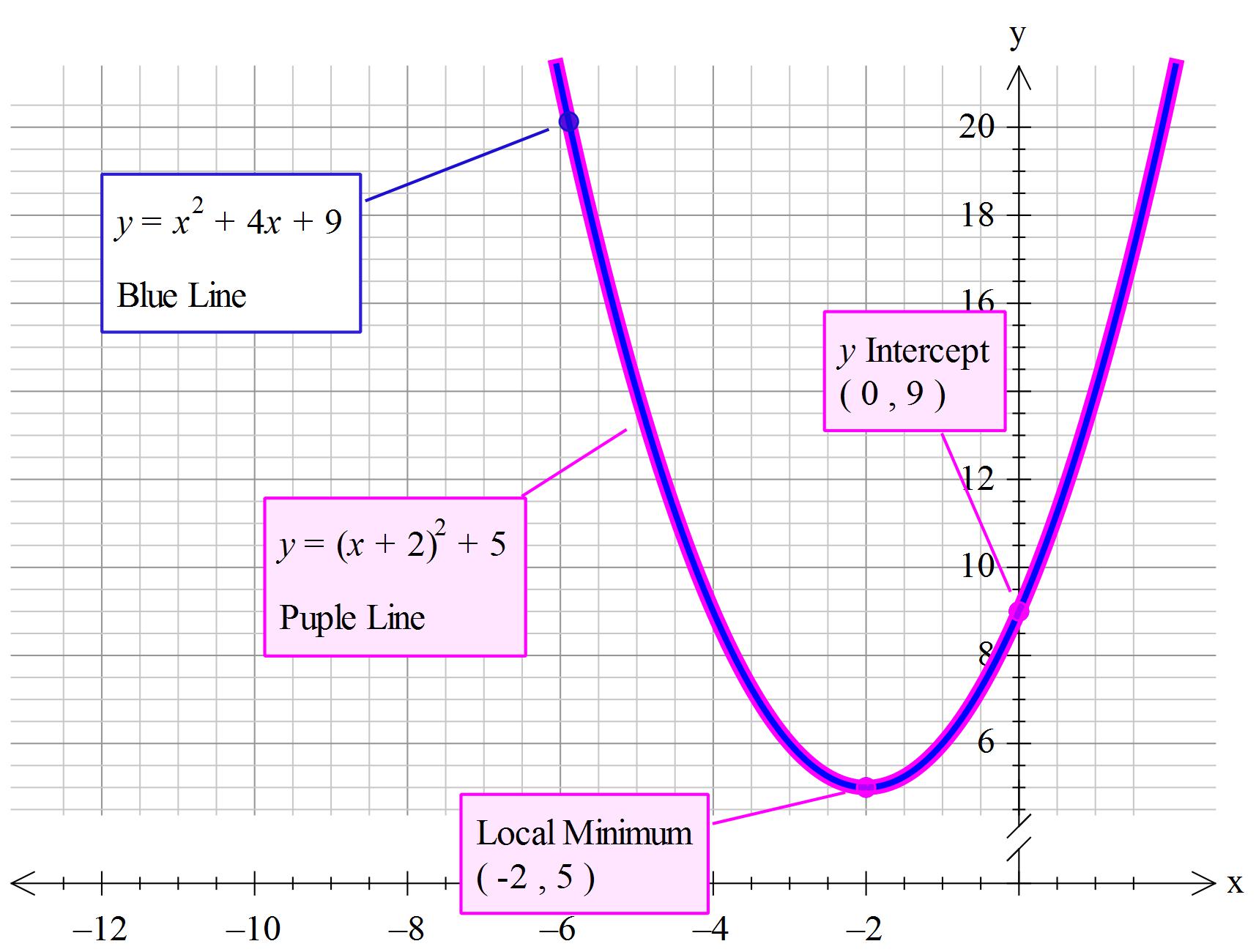Standard form is:#" "y=ax^2+bx +c#
Vertex form is: #y=a(x+color(red)(d))^2+k#.................(1)
We know it passes through two points:
#P_1->(x_1,y_1)->(0,9)#
#color(brown)(P_2->(x_2,y_2)->(color(blue)(-2),color(magenta)(5)) -> Vertex)#
Known that #x_("vertex")=(-1)xxcolor(red)(d) =color(blue)(-2) # (in this case)
#=> d = +2#
'~~~~~~~~~~~~~~~~~~~~~~~~~~~~~~~~~~~~~~~~~~~
Now we have:
#y=a(x+color(red)(2))^2+k#.................(2)
It is also known that #y_("vertex")=color(magenta)(5)# (in this case)
Thus equation (2) becomes
#y=a(x+color(red)(2))^2+color(magenta)(5)#.................(2)
'~~~~~~~~~~~~~~~~~~~~~~~~~~~~~~~~~~~~~~~~
Let us assume that #a =1 # if it is not then the plot will not pass through #P_2#. As the plot does pass through this point then the completed equation is #y=(x+2)^2+5#
The equation can also be derived using the standard form of
#y=ax^2+bx+c#. Doing so would involve a lot more work.



